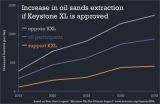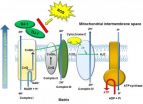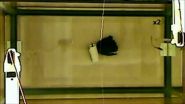(Press-News.org) San Francisco, September 15, 2014—A comparison of five-year sexual function outcomes, as reported by patients treated with external beam radiotherapy (EBRT) versus combination EBRT plus brachytherapy, indicates that the utilization of vessel-sparing radiation therapy makes cure possible without compromising long-term sexual function, according to research presented today at the American Society for Radiation Oncology's (ASTRO's) 56th Annual Meeting.
The study examined the patient-reported outcomes of 91 men with prostate cancer who received MRI-guided, vessel-sparing radiation at University of Michigan Providence Cancer Institute. The vessel-sparing radiation technique limits the amount of radiation to critical erectile tissues using MRI scans to identify the blood vessels responsible for erections. When radiation dose is limited to these critical structures, the risk of erectile dysfunction is lowered.
Of the 91 patients studied, all patients received EBRT. Forty-two of the patients received only EBRT (>77.8Gy), and 49 patients received EBRT plus brachytherapy, the implantation of radioactive seeds near the prostate. The combination patients received brachytherapy in the form of an I-125 permanent prostate implant. None of the patients received androgen deprivation therapy (ADT).
Sexual function at baseline, two years and five years post-therapy was evaluated via patient reported outcomes using two scales— the International Index of Erectile Function (IIEF) scale and a simple, three-item questionnaire that asked patients to indicate which applied to them: 1) I am able to be sexually active without aids or medications; 2) I am able to be sexually active with aids or medications; or 3) I am not able to be sexually active.
The three-question scale was used in addition to the IIEF, which validates erection quality by sexual performance with a partner, because many men were not sexually active with a partner, despite their ability to be active with a partner. Patient-reported outcome on sexual performance according to the IIEF was lower than the outcome reported according to the three-question scale. The average two-year follow-up IIEF scores for EBRT patients and combination therapy patients were 16.5 and 20.8, respectively. The average five-year follow-up IIEF scores for EBRT patients and combination therapy patients were 15.4 and 16.9, respectively.
According to the three-question scale, erectile function was remarkably preserved using MRI-planned vessel-sparing treatment, even in patients who received combination therapy: 78.6 percent of patients who received EBRT (33 of 42) and 91.8 percent of patients who received combination therapy (45 of 49) reported the ability to be sexually active with or without aids at five years post-treatment.
"In the past, men with prostate cancer expected to pay a high toll in loss of quality of life to achieve cure and were willing to accept that as necessary," said lead study author Patrick W. McLaughlin, MD, director of radiation oncology at University of Michigan Providence Cancer Institute in Novi, Mich. "This study makes it clear that even with combination radiation protocols, which are capable of curing the majority of prostate cancers more than 90 percent of the time, avoidance of critical adjacent tissues, such as vessel-sparing, makes cure and quality of life an achievable goal for many men."
The abstract, "Comparison of External Beam and Combination Therapy for Prostate Cancer: Patient Reported Outcomes of Sexual Function with 5-Year Follow-up" will be presented in detail during a scientific session at ASTRO's 56th Annual Meeting at 4:15 p.m. Pacific time on Monday, September 15, 2014. To speak with Dr. McLaughlin, please call Michelle Kirkwood on September 14 – 17, 2014, in the ASTRO Press Office at the Moscone Center in San Francisco at 415-978-3503 or 415-978-3504, or email michellek@astro.org.
ASTRO's 56th Annual Meeting, to be held at the Moscone Center in San Francisco, September 14-17, 2014, is the nation's premier scientific meeting in radiation oncology. The 2014 Annual Meeting is expected to attract more than 11,000 attendees including oncologists from all disciplines, medical physicists, dosimetrists, radiation therapists, radiation oncology nurses and nurse practitioners, biologists, physician assistants, practice administrators, industry representatives and other health care professionals from around the world. Led by ASTRO President Bruce G. Haffty, MD, FASTRO, a radiation oncologist specializing in breast cancer, the theme of the 2014 Meeting is "Targeting Cancer: Technology and Biology," and the Presidential Symposium, "Local-regional Management of Breast Cancer: A Changing Paradigm," will feature Jay R. Harris, MD, FASTRO, and Thomas A. Buchholz, MD, FASTRO, to highlight recent practice-changing, landmark studies and current developments in the local-regional management of breast cancer. ASTRO's four-day scientific meeting includes presentation of up to four plenary papers, 360 oral presentations, 1,862 posters and 144 digital posters in more than 50 educational sessions and scientific panels for 20 disease-site tracks. Three keynote speakers will address a range of topics including oncologic imaging, biology and targeting in oncology, and human error and safety concerns: Hedvig Hricak, MD, PhD, Chair of the Department of Radiology and the Carroll and Milton Petrie Chair at Memorial Sloan Kettering Cancer Center; Frank McCormick, PhD, FRS, DSc (hon), Professor Emeritus and the David A. Wood Distinguished Professor of Tumor Biology and Cancer Research of the University of California at San Francisco Helen Diller Family Comprehensive Cancer Center; and Sidney Dekker, PhD, MA, MSc, Professor and Director of the Safety Science Innovation Lab at Griffith University, Brisbane, Australia.
INFORMATION:
About Astro
ASTRO is the premier radiation oncology society in the world, with more than 10,000 members who are physicians, nurses, biologists, physicists, radiation therapists, dosimetrists and other health care professionals that specialize in treating patients with radiation therapies. As the leading organization in radiation oncology, the Society is dedicated to improving patient care through professional education and training, support for clinical practice and health policy standards, advancement of science and research, and advocacy. ASTRO publishes two medical journals, International Journal of Radiation Oncology • Biology • Physics and Practical Radiation Oncology; developed and maintains an extensive patient website, http://www.rtanswers.org; and created the Radiation Oncology Institute, a non-profit foundation to support research and education efforts around the world that enhance and confirm the critical role of radiation therapy in improving cancer treatment. To learn more about ASTRO, visit http://www.astro.org.
2014 American Society for Radiation Oncology (ASTRO) 56th Annual Meeting
News Briefing, Monday, September 15, 2014, 8:15 a.m. Pacific time
Scientific Session: Monday, September 15, 2014, 4:15 – 5:45 p.m. PT, the Moscone Center
111 Comparison of External Beam and Combination Therapy for Prostate Cancer: Patient Reported Outcomes of Sexual Function with 5 Year Follow-up
Author Block: A. L. Liss1, C. Evans1, V. Narayana2,1, M. J. Schipper1, D. A. Hamstra1, P. McLaughlin1,1, 1University of Michigan, Ann Arbor, MI, 2Providence Cancer Institute, Novi, MI
Purpose/Objective(s): MRI-based planning allows maximum dose restriction to the sub-apex region and specific erectile tissues (corpus cavernosum (CC) and internal pudendal artery (IPA)). Using this technique, we compare 5 year sexual function outcomes for external beam radiotherapy (EBRT) versus combination beam plus brachytherapy (combo).
Materials/Methods: Patients were treated with EBRT (> or = 77.8 Gy) or with combo (using an I-125 permanent prostate implant) at a single institution. All patients underwent MRI-based treatment planning for accurate apex delineation, CC definition, as well as IPA angiography. None received ADT. Sexual function was obtained prospectively by patient reported outcomes using two scales at baseline, 2 years, and 5 years post-treatment; the International Index of Erectile Function (IIEF) scale and a 3 question scale (Q3) as follows: "I am able to be sexually active without aids or medications", "I am able to be sexually active with aids or medications", and "I am not able to be sexually active". The additional scale was utilized to offset the IIEF scale tendency to overestimate sexual dysfunction by its dependence on validation by intercourse with a partner. Dose to the CC and IPA was assessed for both treatment groups as dose to 90% of the structure (D90).
Results: The sexual function for 91 patients (49 combo, 42 EBRT) is presented in Table 1. , which summarizes results separated by treatment and baseline function as follows: IIEF > 16, IIEF 21-25, and all patients for Q3 scale. The average baseline and 5 year (+/- sildenafil) IIEF scores for combo and EBRT were 22.5 and 20.8, 16.9 and 16.0, and 16.5 and 15.4, respectively. At 5 years post-RT by the Q3 metric, 79% of EBRT patients and 92% of combo patients were able to be sexually active (p=0.070). The D90s to the CC and IPA were lower for the combo group (average CC D90 EBRT = 9.2 Gy, combo = 4.5 Gy; average IPA D90 EBRT = 31.3 Gy, combo = 10.2 Gy).
Conclusions: We observed high rates of preserved sexual function 5 years after MRI planned vessel-sparing RT for prostate cancer. The EBRT versus combo outcomes by Q3 metric (79% versus 92% able to be sexually active, respectively) approached statistical significance at 5 years (p=0.070) and suggest that intensive combo therapy can be delivered without compromising long-term sexual function. The lower dose to critical erectile structures with combo versus EBRT may have contributed to this outcome. Further assessment including the influence of patient co-morbidities will clarify the sexual outcome differences we observed between combo and EBRT.
Author Disclosure Block: A.L. Liss: None. C. Evans: None. V. Narayana: None. M.J. Schipper: None. D.A. Hamstra: None. P. McLaughlin: None.
Prostate cancer patients surveyed 5 years after vessel-sparing RT report preserved sexual function
2014-09-16
ELSE PRESS RELEASES FROM THIS DATE:
Keystone XL would likely raise oil sands production and greenhouse gas emissions
2014-09-16
Approval of the Keystone XL pipeline (KXL) would likely increase oil sands extraction, according to 26 oil sands professionals and researchers surveyed by the non-profit organization Near Zero. The results are detailed in the report, "Keystone XL: The Climate Impact," and includes both supporters and opponents of the pipeline.
This additional extraction of oil sands could lead to significantly higher greenhouse gas emissions, with the exact amount depending largely on how markets respond.
"This report examines three main scenarios discussed by participants in our ...
Single fraction RT as effective as multiple fraction RT for bone metastases
2014-09-16
San Francisco, September 15, 2014—A prospective study that compared patient-reported outcomes of a broad set of cancer patients with bone metastases demonstrates that single fraction radiation therapy (SFRT) is equally as effective as multiple fraction radiation therapy (MFRT) when pain, function and quality of life are considered, according to research presented today at the American Society for Radiation Oncology's (ASTRO's) 56th Annual Meeting. The multi-center study indicates that improvements in patients' pain, function and degree of distress were similar between the ...
Microbiome research shows each tree species has a unique bacterial identity
2014-09-16
EUGENE, Ore. -- Each tree species has its own bacterial identity. That's the conclusion of University of Oregon researchers and colleagues from other institutions who studied the genetic fingerprints of bacteria on 57 species of trees growing on a Panamanian island.
"This study demonstrates for the first time that host plants from different plant families and with different ecological strategies possess very different microbial communities on their leaves," said lead author Steven W. Kembel, a former postdoctoral researcher in the UO's Institute of Ecology and Evolution ...
Molecular mechanisms of the suppression of axon regeneration by KLF transcription factors
2014-09-16
Molecular mechanisms of the Krüppel-like family of transcription factors (KLFs) have been studied more in proliferating cells than in post-mitotic cells such as neurons. Prof. Jeffrey L. Goldberg who comes from University of California San Diego, USA and his team recently found that KLFs regulate intrinsic axon growth ability in central nervous system (CNS) neurons including retinal ganglion cells, and hippocampal and cortical neurons. With at least 15 of 17 KLF family members expressed in neurons and at least 5 structurally unique subfamilies, it is important to ...
Give progesterone a chance
2014-09-16
There is currently no standard pharmacological treatment for spinal cord injury. Here, Dr. Florencia Labombarda, who comes from Buenos Aires University, Argentina suggests that progesterone, a steroid hormone, may be a promising therapeutical candidate as it is already for traumatic brain injury, where it has reached phase II clinical trials. We rely on previous works showing anti-inflammatory, neuroprotective and promyelinating roles for progesterone after spinal cord injury and in our recent paper, in which we demonstrate that progesterone diminishes lesion, preserves ...
The role of DJ-1 in the oxidative stress cell death cascade after stroke
2014-09-16
Oxidative stress is closely associated with secondary cell death in many disorders of the central nervous system including stroke, Parkinson's disease, Alzheimer's disease. Among many aberrant oxidative stress-associated proteins, DJ-1 has been associated with the oxidative stress cell death cascade primarily in Parkinson's disease. Although principally expressed in the cytoplasm and nucleus, DJ-1 can be secreted into the serum under pathological condition. Recently, a close pathological association between DJ-1 and oxidative stress in stroke has been implicated. To this ...
A heart-felt need for dairy food
2014-09-16
A daily small serve of dairy food may reduce the risk of heart disease or stroke, even in communities where such foods have not traditionally formed part of the diet.
A study of nearly 4000 Taiwanese, led by Emeritus Professor Mark Wahlqvist from Monash University's Department of Epidemiology and Preventive Medicine and the Monash Asia Institute, considered the role increased consumption of dairy foods had played in the country's gains in health and longevity.
"In a dominantly Chinese food culture, unaccustomed to dairy foods, consuming them up to seven times a ...
More cheese, please! News study shows dairy is good for your metabolic health
2014-09-16
This news release is available in French. Dairy is considered part of a healthy diet and dietary guidelines recommend the daily consumption of 2-4 portions of milk-based products such as milk, yogurt, cheese, cream and butter.
It's well known that dairy products contain calcium and minerals good for bones, but new research has shown that dairy consumption may also have beneficial effects on metabolic health and can reduce risk of metabolic diseases such as obesity and type 2 diabetes.
Curious about these impacts, researchers from CHU de Québec Research Center ...
Judging a fish by its color: for female bluefin killifish, love is a yellow mate
2014-09-16
VIDEO:
NYU Polytechnic School of Engineering researchers and their collaborators at University of Illinois at Urbana-Champaign found that fertile killifish females preferred swimming near a male replica that moved through the...
Click here for more information.
There's an old adage that warns against passing judgment based on appearance, but female bluefin killifish, like many animal species, apparently don't share such human wisdom when choosing a mate. Researchers at the New ...
Unraveling cell division
2014-09-16
This news release is available in Spanish. CRG researchers shed new light on mitosis. The study published in the Journal of Cell Biology describes how Topo 2 disentangles DNA molecules and is essential for proper cell division
At this very moment thousands of our body's cells are duplicating and dividing. This is the mechanism by which the body repairs damaged tissues and regenerates others like skin and hair. It involves a fairly complex process known as "mitosis", during which the cell duplicates its genetic material and separates it into two identical halves, which ...


